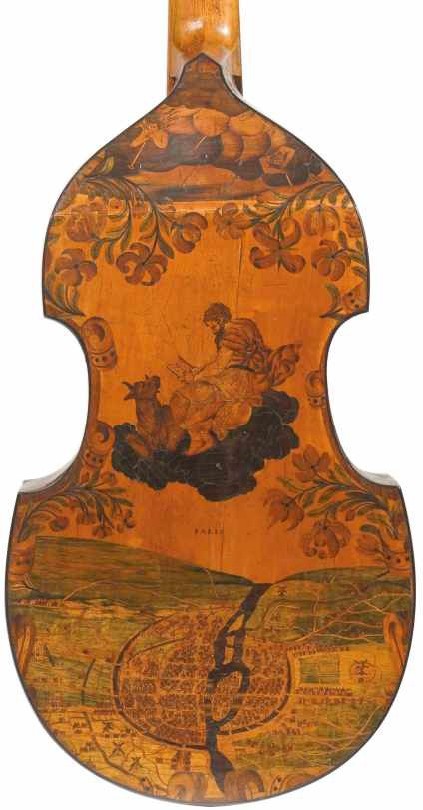
The French viol maker Michel Collichon (1641–c.1694) is an enigma. His very few surviving instruments are among the finest viols in the world today, and we are lucky that a number of them are still in their original condition. His workmanship shows intelligence, creativity and confidence. His work is simple and inspired in equal measure and, for anyone interested in learning from extant instruments, it is hard to find or recommend a better master. The inconsistencies and points of difference in his instruments, from his wood choice to peculiarities in set-up, give the impression of a maker always striving to better his craft and who was unafraid to try new ideas and make changes to his method – marking him out as a unique talent among the French luthiers of his time. My recent research into another viol – the famous ‘Plan de Paris’ in reference to a marquetry map of Paris on the back – has determined that it, too, was made by Collichon, bringing the total number of known viols by the maker to ten. This is a good opportunity to re-appraise what we know about this enigmatic and creative luthier, based on close examination of the instruments themselves.
But first, some history. Michel Collichon came from a family of instrument makers prominent in Parisian musical society in the reign of Louis XIV. They were known to such luminaries of the viol as Jean de Sainte-Colombe and Jean Rousseau; indeed Rousseau made reference to them in his 1687 Traité de la Viole: ‘When I was learning from Sainte-Colombe [I] was housed with the “bonhomme luthier” Collichon who at this time used to live at Rue de la Harpe…’ Of Michel Collichon himself, little is known: just two surviving documents relate directly to him, both dating from the year 1682, and both containing his signature. Michel was the second of five children born to Nicolas Collichon, a lute maker by trade, though there are no known instruments attributed to him. Nicolas was a prosperous man, owner of five properties in Paris including some land in Villepinte, in the north-east of the city – all assets his children eventually inherited. He was also tenant or owner of a shop on Pont St Michel, on the corner of Rue de la Harpe. Michel Collichon ran a shop on Rue Jean Pain Mollet and, according to research by Corinne Vaast, it is also likely that at some point he too had a workshop on the Pont St Michel, close to that of his father – or that they cohabited the same premises.
Leggete l'articolo completo e molti altri in questo numero di
The Strad
Opzioni di acquisto di seguito
Se il problema è vostro,
Accesso per leggere subito l'articolo completo.
Singolo numero digitale
February 2020
Questo numero e altri numeri arretrati non sono inclusi in un nuovo
abbonamento. Gli abbonamenti comprendono l'ultimo numero regolare e i nuovi numeri pubblicati durante l'abbonamento. The Strad
Abbonamento digitale annuale
OFFERTA SPECIALE: Era
€57,99
Adesso €45,99
fatturati annualmente